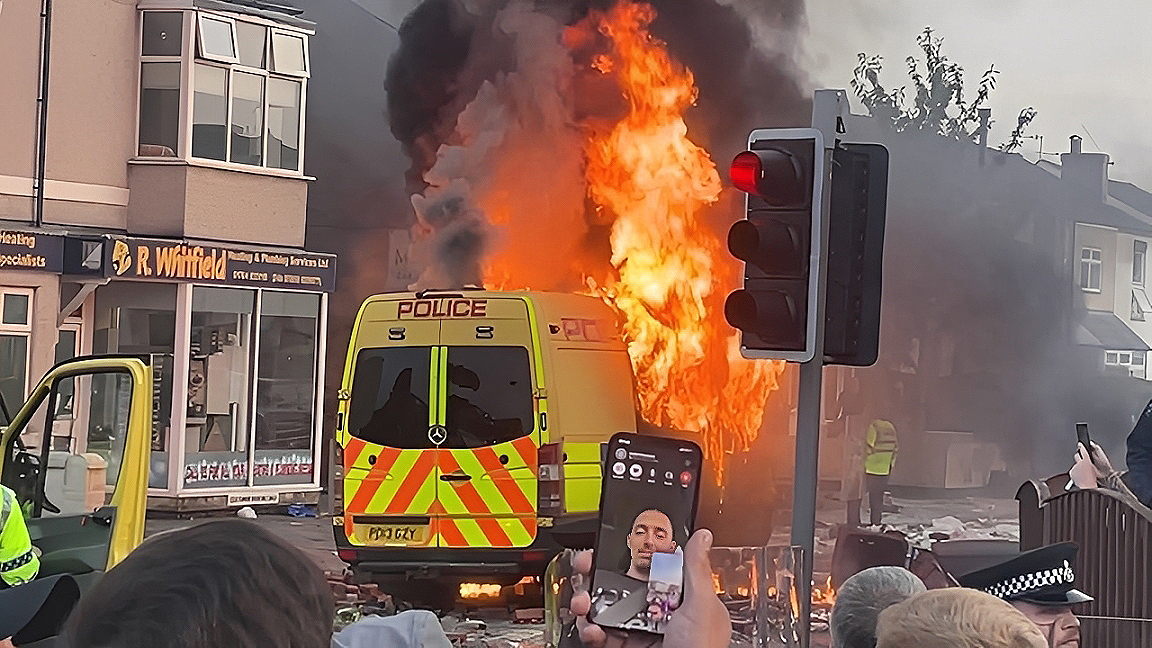
Home Affairs Correspondent
Far-right extremism has become the primary focus of Britain’s anti-radicalisation programme, according to Home Office figures released on November 6, with Prevent referrals reaching record levels last year.
Referrals rose by 27 per cent to 8,778 in 2024–25, the highest since the scheme began. The data reveals a pivotal shift in the UK’s extremism landscape. Referrals concerning “Extreme Right-Wing” (ERW) ideology accounted for 21% (1,798) of all cases, surpassing those related to “Islamist Extremism” (IE), which declined to 10% (870). This trend is particularly pronounced among cases deemed serious enough for the specialised Channel programme, where 42% (612 of 1,464) of adopted cases involved ERW concerns, compared to 15% (226) for IE.
| Type of Concern | Q1 | Q2 | Q3 | Q4 | Total |
|---|---|---|---|---|---|
| Total | 1,809 | 1,749 | 1,933 | 3,287 | 8,778 |
| Extreme Right Wing | 352 | 395 | 402 | 649 | 1,798 |
| Islamist Extremism | 219 | 195 | 213 | 243 | 870 |
| Left Wing Extremism | 9 | 4 | 1 | 7 | 21 |
| Anarchist Extremism | 2 | 2 | 3 | 6 | 13 |
| Northern Ireland Related – Dissident Republican Extremism | 6 | 5 | 2 | 3 | 16 |
| InCel | 19 | 12 | 10 | 25 | 66 |
| Fascination with extreme violence or mass casualty attacks (where no other ideology) | 43 | 65 | 82 | 279 | 469 |
| Multiple ideologies (with no dominant ideology) | 186 | 54 | 80 | 104 | 424 |
| No ideology – other susceptibility to radicalisation identified | 409 | 358 | 426 | 715 | 1,908 |
| No ideology identified | 530 | 623 | 671 | 1,185 | 3,009 |
| Other | 34 | 35 | 41 | 65 | 175 |
| Unspecified | 0 | 1 | 2 | 6 | 9 |
Children aged 11 to 15 accounted for more than a third of all referrals, making them the largest age group involved. Nearly 3,200 school-aged children were referred to Prevent last year, highlighting growing concerns about youth vulnerability to extremist influences.
“The increase in right-wing referrals does not surprise us as Prevent referrals have always been a reflection of public anxieties,” said Layla Aitlhadj, Director of advocacy group Prevent Watch. “At Prevent Watch we have seen an increase in individuals contacting us as a result of right-wing Prevent referrals where unpalatable views are being treated as matters of counterterrorism rather than as teachable moments.”
Mental health continues to play a significant role in Prevent cases, with one in three referrals involving individuals with recorded mental health or neurodiversity conditions. Of these, 1,226 were identified as having Autistic Spectrum Disorder.
Aitlhadj added, “We have always been concerned that Prevent would extend and be justified in other communities without any evidence that Prevent actually stops terrorism.”
Educational institutions remain a key source of referrals, accounting for 36 per cent of the total, although the proportion coming from teachers has declined slightly. Police referrals increased by 37 per cent, and those from local authorities rose by 54 per cent. In contrast, referrals from families and community members fell by 25 and 7 per cent respectively.
The West Midlands recorded the highest referral rates in the country, while the North West experienced a notable increase in Channel cases, which more than doubled.
Officials noted that some of the overall rise may be due to administrative changes. A new case management system introduced in May 2024 has affected how referrals are recorded, contributing to an increase in Channel adoptions from 7 to 17 per cent.
External factors also influenced referral numbers. Following the Southport knife attack trial, referrals surged by 82 per cent in the first quarter of 2025. Lord Anderson, the Interim Independent Prevent Commissioner, said media coverage surrounding the case “likely” contributed to the spike.
Feature photo: In Southport, England, on July 30, 2024, far-right extremists set a police van alight and surrounded a mosque during riots that shocked the town, reflecting a wider surge in far-right activity across the UK.(Credit: StreetMic LiveStream/WikiCommons)